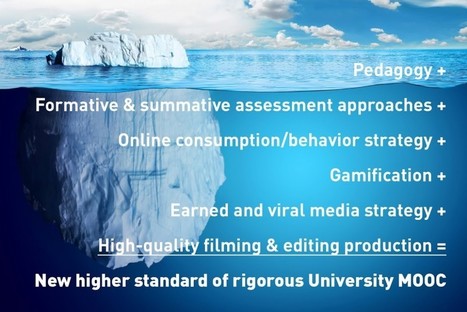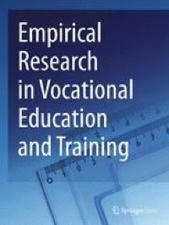 Your new post is loading...
 Your new post is loading...
In this series of posts for teachonline, we explore the possible, probable and preferred futures of higher education in Canada. In this post we examine the key issues that must be addressed, focusing attention on the need for a comprehensive rethink of the eco-system. Just dealing with one issue (such as funding or curricula) without dealing with the others would have unintended consequences for any institution. Colleges, universities and Indigenous institutes are actively exploring options and are beginning to address these complex, important issues.
These 15 challenges will shape the future of higher education in Canada:
Indigenization – There are three issues at play here.
What higher education can do to promote and embed the idea that we are all treaty people (Truth and Reconciliation)
How more Indigenous learners can succeed in higher education (there is a strong link between these issues and that of decolonialization of the curriculum)
Whether established, dedicated Indigenous institutions are adequately supported and enabled to thrive
Funding and support for teaching and learning and assessment – Without a change in funding and support for teaching, learning and assessment, the work of colleges and universities is fiscally unsustainable. Many institutions are currently vulnerable to modest reductions in the enrolment of international students. This may require a rethink at a fundamental level of funding models and shared services.
Precarity of the instructor class – The number of tenured and tenure-track (university) or permanent instructor (college) positions has been steadily declining. About 60% of all teaching in higher education in Canada is undertaken by sessional instructors (gig workers) and that number is rising. This links to issues of quality and training as well as to the underfunding of Canada’s higher education system. The situation is similar for non-academic staff at our institutions.
Growing demand raises issues of capacity – It’s uncertain how each province will cope with a significant increase in demand from domestic students between now and 2028.
Adding new institutions – If new institutions are created, it’s unclear what the implicit design for learning assumptions will be.
Growth funding for existing institutions – If growth funding occurs, it’ll be vital to figure out the design for learning assumptions and how sustainable the funding will be. Some of the smaller institutions, often located in rural or northern communities, would benefit from investment and growth if this funding was sustainable — otherwise, growth may make them more vulnerable.
The role of the private sector (both private colleges and private universities) – Peering into the future means exploring what kind of public-private partnerships might be created.
The role of hybrid and online and distance learning in designs for growth – It is yet to be determined whether growth will be based on a significant expansion of hybrid and online and distance learning or on expanding classroom-based learning.
The role of AI in the expansion of access – It’s possible that some jurisdictions may experiment with an AI-based institution offering courses and programs leading to certificates, Red Seal certification, diplomas and/or degrees.
Purpose and plans – Governments have been shifting the purpose and focus of the work of colleges, Indigenous institutes and universities toward meeting labour market pressures and demands. Although some modest impact can be seen in very specific areas, the skills gap is now worse than it was when this pressure began, which may add new purpose and pressures on higher education.
Work-integrated learning – 40% of university students and 60% of college students in Canada currently undertake work-integrated learning in some form during their studies. How this develops and grows is vital.
New curricula – Given the changes taking place in the nature of work, the deployment of technology and new fields of work (e.g., new forms of construction, new approaches to health through genetics) institutions face new curricular challenges. What’s unclear is whether new programs of study will displace existing ones, and how fast institutions can respond to emerging opportunities given declining funding and increasing government control.
Lack of faculty development and professional learning – As became clear in the pandemic, faculty skills in instructional design, reimagining assessment and the effective design of engaged and authentic learning need upgrading.
Imagineering and innovation – In highly unionized environments, an important consideration is how creative institutions and leadership can be. It’s also important to examine how much appetite exists for significant change.
Risk management – Willingness to take risks and preparedness for adverse events (e.g., forest fires, floods, natural disasters) are vital considerations for leaders and institutions.
In responding to these issues, institutions will need to refocus their purpose, core activities, business processes and relationships within and beyond their communities. It is a challenging task but an important one.
Tools and Trends
Insights Into the Future and Promise of Online Learning
Via Canadian Vocational Association / Association canadienne de la formation professionnelle
Étude sur la situation en novembre 2023 selon KPMG
En septembre dernier, nous partagions un premier portrait (mai 2023) de l’Utilisation des outils d’IA générative par les personnes étudiantes selon une première étude par KPMG publiée à la suite de l’apparition de l’outil d’IA générative ChatGPT.
Voici un nouveau portrait plus global de la situation à l’automne 2023. Ce nouveau sondage a été mené par KPMG au Canada auprès de 4 515 Canadiens du 20 octobre au 6 novembre 2023, à l’aide de la plateforme de recherche en ligne Methodify de Sago. Au total, 1 004 répondants ont dit utiliser des outils génératifs d’IA. La marge d’erreur est de +/— 3 points de pourcentage, avec un niveau de confiance de 95 %.
Via Canadian Vocational Association / Association canadienne de la formation professionnelle

|
Scooped by
juandoming
|
Universities are working to kick-start a new generation of entrepreneurs – and prompting critics to question the wisdom of even trying
We are a Canadian, not-for-profit company producing flexible, mobile-friendly, interactive learning courses, educational experiences, and assessment solutions that can be distributed across the wide variety of Massive Open Online Course (MOOC) platforms, open source learning platforms, and Learning Management Systems (LMS) used by academia and industry.
Via Peter Mellow, Elke Höfler
«Le classement de Shanghaï et celui du Times Higher Education sont très populaires auprès des administrateurs universitaires» À l’occasion de la sortie de son ouvrage intitulé Les dérives de l’évaluation de la recherche. Du bon usage de la bibliométrie (Éditions Raisons d’agir, Paris), Yves Gingras explique que le monde de la recherche et de l’enseignement supérieur est agité depuis plusieurs années par une véritable « fièvre de l’évaluation ». Si le jugement de type subjectif et qualitatif rendu par les pairs et les experts est toujours d’usage, une tendance au simple résultat chiffré s’est installée, facilitant ainsi la création de palmarès de toutes sortes. C’est le cas notamment des revues savantes, qui se font attribuer un « facteur d’impact », mais aussi des universités elles-mêmes. (..) - Le Devoir, par Benoit Rose, 01/02/2014
Via ESR_Info
|
Étude sur la situation en mai 2023
En ce début de session de l’automne 2023, l’utilisation des outils de l’IA générative continue d’évoluer rapidement, non seulement dans le secteur de l’éducation, mais aussi dans plusieurs autres sphères de la société.
Selon une étude menée du 17 au 29 mai 2023 par KPMG au Canada, un Canadien sur cinq utilisait déjà des outils d’intelligence artificielle (IA) générative dans leur travail ou leurs études.
Via Canadian Vocational Association / Association canadienne de la formation professionnelle
Background
For vocational and professional education to remain relevant, instructors need to keep developing themselves and their practices. Much of instructor learning happens on-the-job. Drawing on literature on teacher learning in the workplace, this article explores how structural and cultural conditions shape professional learning of instructors in departments for post-secondary vocational and professional education in western Canada.
Methods
A multiple case study approach was used to explore how instructors perceive departmental conditions as enhancing or inhibiting professional learning. Interview data, meeting observations, and program documentation was collected from 27 instructors from 5 departments in three institutes for post-secondary vocational and professional education. The educational programming in the five departments cover four industry sectors: two healthcare departments, one building trades, one business, and one social services department.
Results
Structural conditions reported to facilitate instructor professional learning at the department level include student feedback, job-rotation, coordinating work-placements, and whether participation in continuing professional development is a licensing requirement of the profession. Heavy workload and the way teaching is scheduled are most often reported as conditions inhibiting learning. Considering cultural conditions, three in-depth case descriptions illustrate how instructors draw on beliefs and practices prevalent in their original trade/profession when shaping their departmental culture as a learning environment.
Conclusions
The concept of sense-making proved useful to describe how instructors draw on elements of the occupational culture taught in the program when shaping their workplace as a learning environment. This influence of occupational culture could help explain previously observed differences in how instructors from various industry sectors engage in professional learning. Organizational support is warranted for facilitating organizational conditions for instructor learning including the development of departmental leaders’ capacity to influence workplace conditions for professional learning.
Via Canadian Vocational Association / Association canadienne de la formation professionnelle

|
Rescooped by
juandoming
from CME-CPD
|
Comment moderniser l'enseignement en médecine générale - Journée de la SSMG Belge (Société Scientifique de Médecine Générale)
Via Gilbert C FAURE
There are 400,000 Canadian jobs looking for people, and more than 1.32 million Canadians looking for jobs. These unfilled jobs mean unnecessary unemployment, costs to individuals and communities, and lost productivity and profit for employers. One study estimated that skills gaps and mismatches in Ontario alone cost that economy $24.3 billion a year.
Via Canadian Vocational Association / Association canadienne de la formation professionnelle
"Google today announced it has added 36 new university campuses across the US and Canada to Street View in Google Maps. Want to go on a tour of a school without actually driving there and you know, walking? ..."
Via Leona Ungerer
|



 Your new post is loading...
Your new post is loading...

















